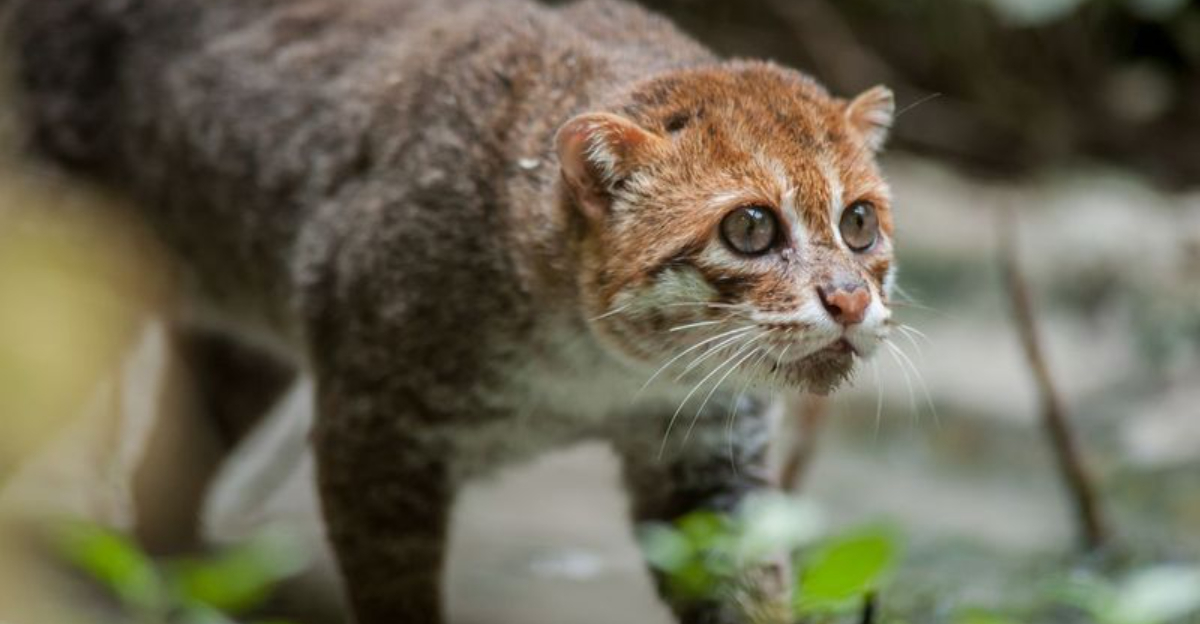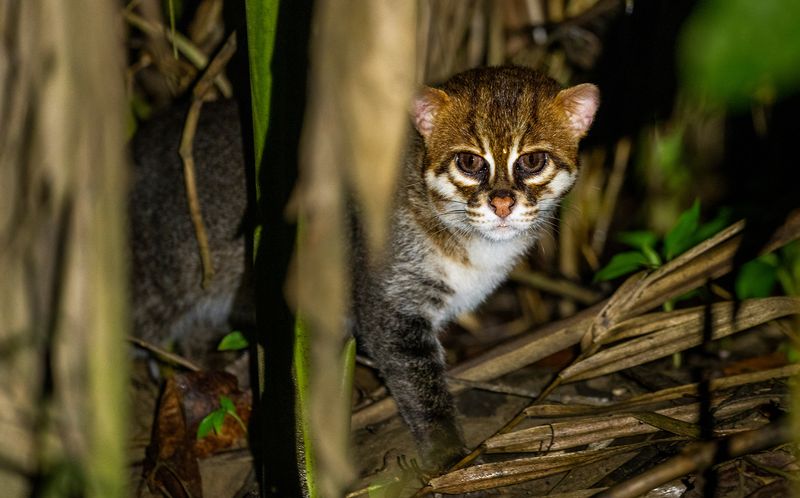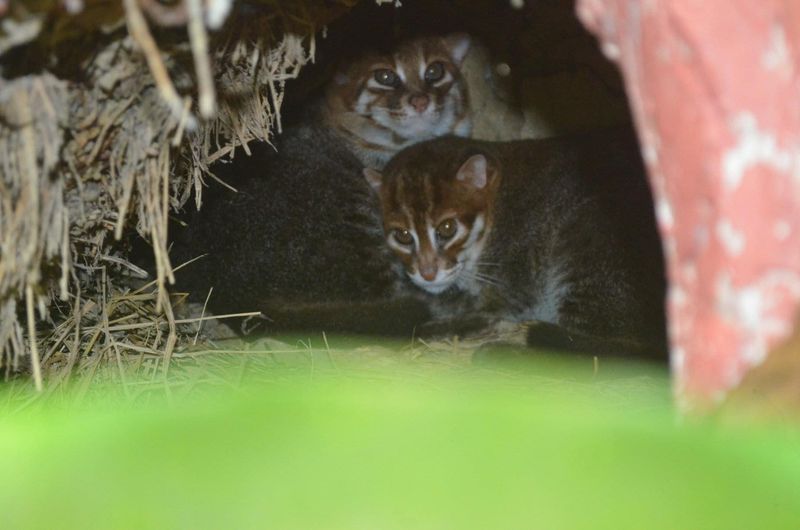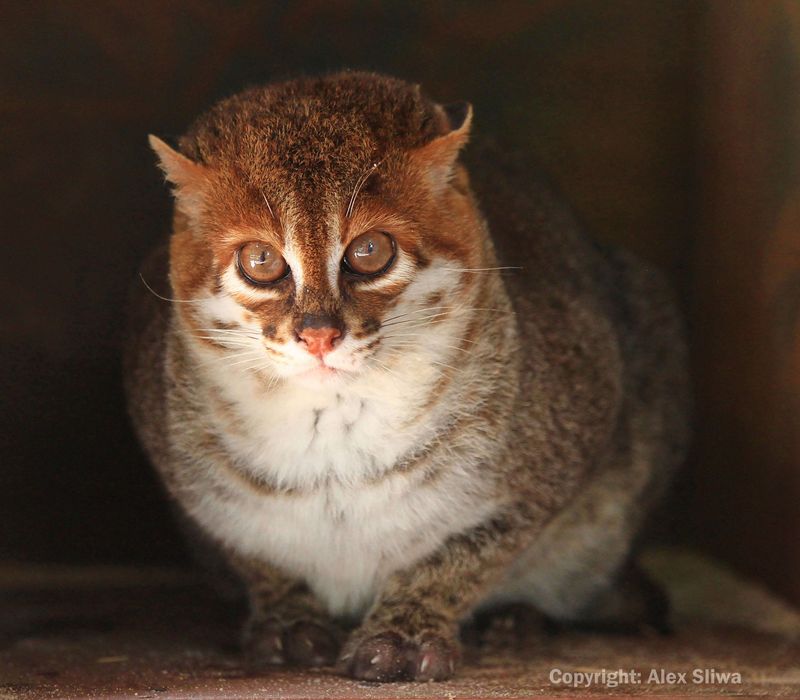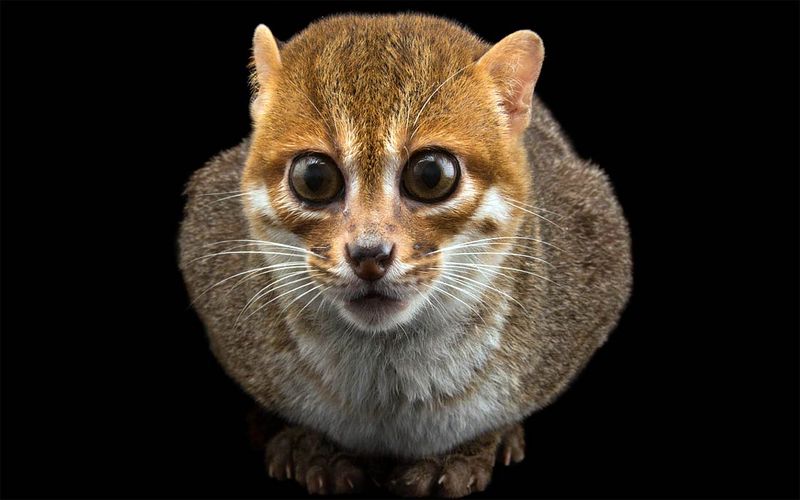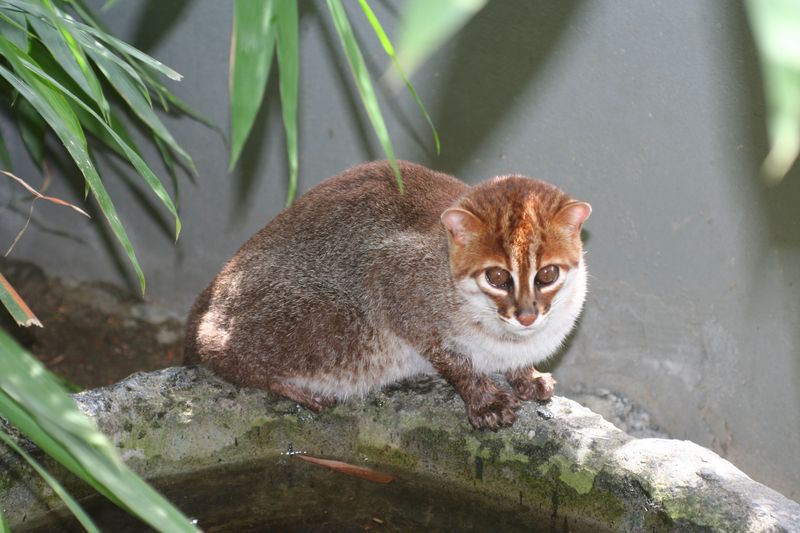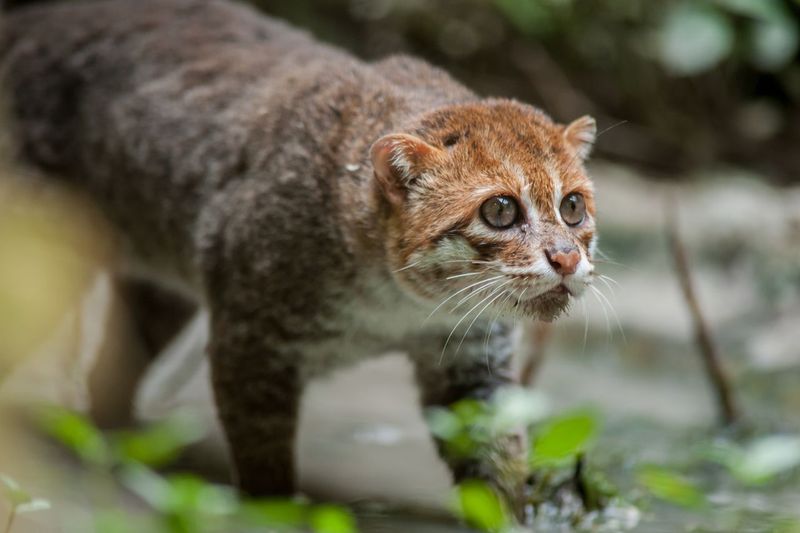📖 Table of Content:
Deep in the swampy rainforests and riverine corridors of Southeast Asia lives a feline so rarely seen that even veteran wildlife biologists count a single glimpse as a career highlight. The flat-headed cat, as it is known, does not roar or patrol vast savannahs. Instead, it prefers the shadows of lowland forests and the muddy banks of jungle streams, slipping silently between reeds and undergrowth. Its presence is whispered rather than proclaimed.
Conservationists face an uphill battle when it comes to raising awareness for species like this. While lions and tigers grace posters and documentaries, the flat-headed cat’s story is told mostly through scattered sightings, grainy camera trap images, and the occasional footprint in wet soil. But what it lacks in fame, it makes up for in fascinating adaptations and evolutionary uniqueness.
This cat is a true oddity among felines, having specialized in a niche that few others explore. Understanding the flat-headed cat is not just about learning a new animal’s behavior; it’s about uncovering how life can flourish in the margins of ecosystems we rarely think about. Here are eight remarkable facts that shine a light on its hidden world.
1. Extremely Rare and Elusive
Few wild cats inspire such mystery as the flat-headed cat, primarily because it is so seldom encountered in the wild. With its population estimated to be under 2,500 mature individuals, spotting one in its natural habitat is akin to finding a needle in a rainforest haystack. Limited access to its flooded forest environment further restricts research and public awareness. Conservationists often rely on indirect methods like camera traps and scat analysis to study its habits. In terms of global attention, it remains vastly overshadowed by larger, more iconic species. Unfortunately, this invisibility has worked against its protection, making it more vulnerable to extinction. Its rarity is both a blessing for its secretive lifestyle and a curse for its survival.
2. Native to Southeast Asia
Spanning the tropical lowlands of Thailand, Peninsular Malaysia, Sumatra, and Borneo, the flat-headed cat’s range is already fragmented and declining. These regions once teemed with biodiversity-rich wetlands, but massive conversion to palm oil plantations and agricultural fields has eaten away at their natural borders. Notably, the cat depends heavily on peat swamp forests and freshwater habitats—ecosystems that are among the most threatened in Southeast Asia. Much of its historic range is now dry or degraded, pushing the species into smaller, disconnected pockets. While protected areas exist within these countries, enforcement and coverage are often inadequate. Environmental degradation continues to chip away at this fragile landscape. The cat’s geographic identity is tightly bound to some of the world’s most endangered habitats.
3. Unique Head Shape
Curiously named, the flat-headed cat sports an unmistakably flattened skull and a narrow, elongated head. This peculiar head shape is not just cosmetic — it likely evolved as an adaptation to enhance its hunting prowess in aquatic environments. The aerodynamic contour may reduce water resistance as the cat dives and swims after prey. Its large, forward-facing eyes and low-set ears add to the predatory edge, improving both vision and stealth. In contrast to the rounded skulls of most cats, this structural design stands out as remarkably specialized. It also contributes to a sleeker profile when stalking along the water’s edge. The flat-headed cat is a vivid example of form perfectly following ecological function.
4. Semi-Aquatic Lifestyle
Rare among felines, the flat-headed cat embraces the water as part of its daily survival routine. Unlike its land-loving relatives, this species is drawn to rivers, lakes, and marshes where it hunts with expert agility. It has been observed swimming confidently and even diving below the surface to catch prey. Some researchers have noted behaviors akin to otters, such as using their paws to search underwater crevices. Its comfort in wet habitats marks a significant behavioral divergence from other wild cats. Because it relies on aquatic zones, any degradation of river systems directly threatens its way of life. This aquatic dependence sets the flat-headed cat apart as one of nature’s few water-hunting felines.
5. Specialized Diet
Fueling its aquatic lifestyle is a diet meticulously tailored to its environment. The flat-headed cat primarily consumes fish, amphibians, and aquatic invertebrates, although small mammals sometimes make the list. Its dentition is adapted for a slippery diet — curved canines and strong jaws allow it to secure wriggling prey. This evolutionary trait gives it a decisive advantage in catching fish, which form a significant portion of its meals. Researchers believe the cat’s feeding behaviors evolved in tandem with its habitat choices. Its precision and efficiency in capturing aquatic animals highlight a deep specialization. Few predators exhibit such a narrow yet refined dietary focus.
6. Webbed Feet
Function meets finesse in the flat-headed cat’s partially webbed toes and non-retractable claws. These physical traits enhance its ability to walk on muddy or wet terrain, which would otherwise hinder a less adapted feline. The webbing aids propulsion in water, while the always-extended claws provide a firm grip when hunting. Unlike domestic cats, which retract their claws for stealth, this species relies on constant traction and tactile feedback. Its paws are clearly built for dual terrain — equally capable in swamps as on soft forest floors. Such evolutionary traits speak to the cat’s mastery of its ecological niche. These adaptations equip it to excel where few other predators dare tread.
7. Very Little Studied
Despite its remarkable traits, the flat-headed cat remains one of the least studied felids in the world. Its secretive habits, nocturnal behavior, and shrinking population make field observations exceedingly rare. Most of what scientists know comes from sporadic camera trap footage or individual reports from zoos and sanctuaries. This dearth of data complicates conservation planning, as crucial information on breeding, territory, and behavior is largely missing. Even basic aspects of its life history remain speculative or anecdotal. In the realm of wildlife research, the flat-headed cat is still a frontier waiting to be explored. This scientific obscurity underscores how much we have yet to learn — and how urgent it is to do so.
